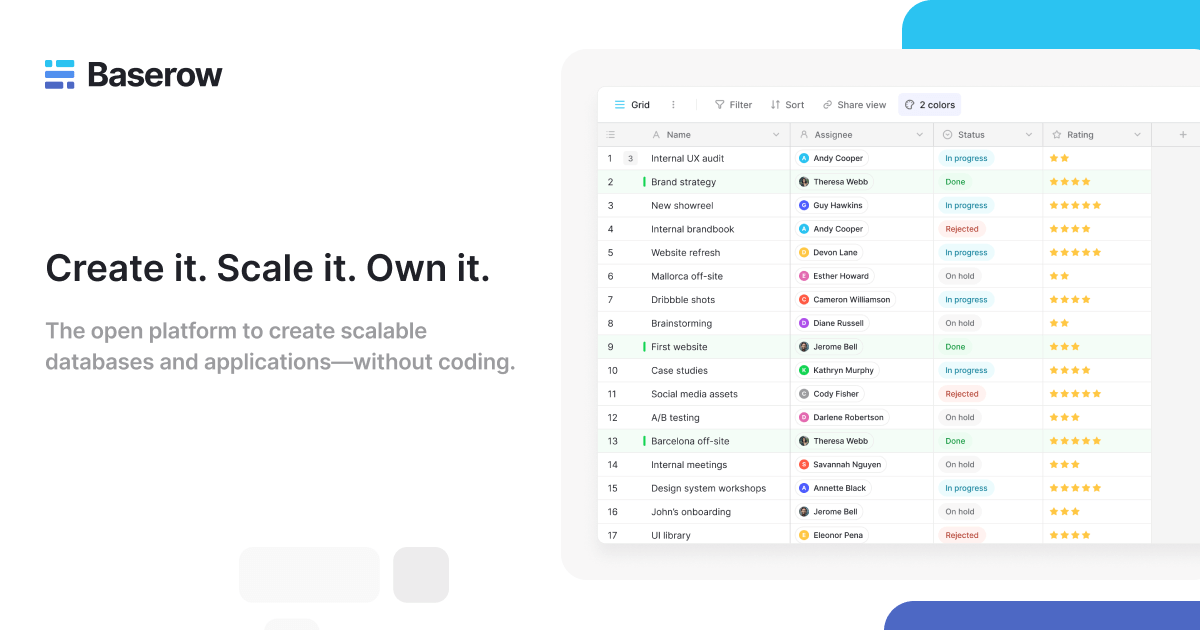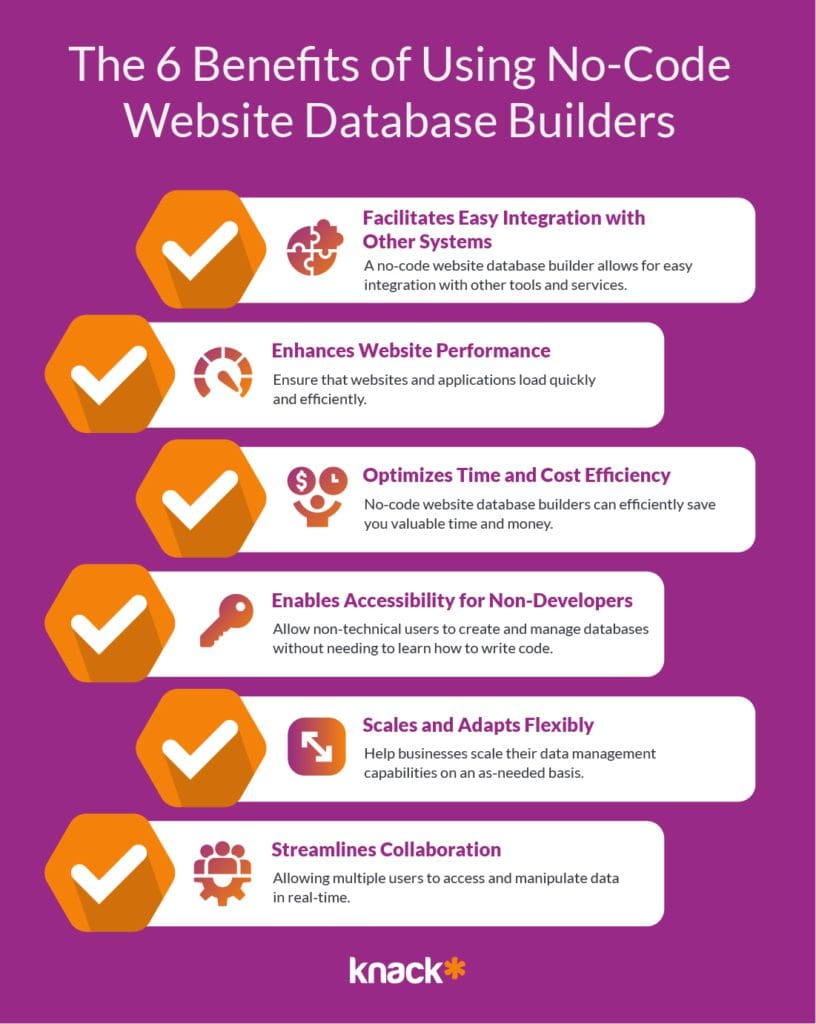How No-Code Devices Simplify Open Platform Database Creation for Everybody
How No-Code Devices Simplify Open Platform Database Creation for Everybody
Blog Article
Discover Just How Scalable Data Sources Can Be Utilized Without Coding to Boost Your Company Workflow
In today's fast-paced company setting, the ability to manage and assess information efficiently is paramount. Scalable data sources, particularly when combined with no-code options, use a transformative technique that equips non-technical individuals to simplify operations. By using devices that call for no coding competence, companies can enhance their operational capacities while decreasing dependancy on IT resources. However, the real question depends on recognizing how these solutions can be customized to specific business requirements and what prospective obstacles may emerge in their implementation. Checking out these aspects can brighten the path to functional quality.
Recognizing Scalable Data Sources
Scalable data sources are vital for contemporary business operations, allowing organizations to successfully take care of increasing volumes of data without giving up performance. These databases are made to adapt and expand to the changing demands of a company, making sure that they can take care of larger datasets and more complicated questions as business needs evolve.
Recognizing scalable databases includes identifying their two main types: vertical scaling and horizontal scaling. Vertical scaling, or "scaling up," entails adding more power (CPU, RAM) to an existing web server to enhance efficiency. On the other hand, horizontal scaling, or "scaling out," requires adding more servers to distribute the lots, which often causes greater flexibility and mistake resistance.
An additional essential facet is the style of scalable data sources, which can be either non-relational or relational. Relational databases, such as MySQL and PostgreSQL, are structured and utilize SQL for queries, while non-relational data sources, like MongoDB and Cassandra, provide more adaptability with disorganized data.
Eventually, recognizing scalable data sources is vital for services intending to take advantage of information as a tactical property, allowing them to stay competitive in a significantly data-driven atmosphere.

Benefits of No-Code Solutions
Opening the possibility of no-code options equips organizations to enhance operations and improve efficiency without the requirement for extensive shows knowledge. These systems enable non-technical individuals to produce, modify, and manage data sources effortlessly, hence equalizing accessibility to technology across teams.
Among the primary benefits of no-code services is their rate of application. Organizations can quickly release applications and automate procedures, considerably decreasing the moment invested in development cycles. This dexterity makes it possible for companies to respond quickly to market adjustments and consumer requirements, promoting an one-upmanship.
Additionally, no-code platforms lower dependence on IT departments for everyday tasks, allowing technological teams to concentrate on more intricate projects that need specialized abilities. This change not only enhances resource allowance yet likewise promotes innovation within the organization.
Cost-effectiveness is another benefit, as no-code services can lower advancement and maintenance costs. By lessening the demand for coding experience, firms can harness the capacities of their existing workforce without the overhead of hiring added personnel.
Popular No-Code Database Devices
The surge of no-code solutions has led to the appearance of different data source devices that accommodate services seeking efficiency and access. These tools empower users with limited technical knowledge to develop, take care of, and adjust databases perfectly.

Caspio attracts attention for its capacity to build internet applications without any kind of coding. It enables organizations to create durable data sources and release applications quickly, accommodating numerous market needs. Propensity uses effective information and straightforward interfaces administration capabilities, making it possible for organizations to build customized applications customized to their process.

Usage Cases in Service Workflow
How can services leverage database devices to improve their procedures? Scalable databases provide companies with powerful abilities to take care of and evaluate information without the need for comprehensive coding knowledge. These tools can improve different organization processes, ultimately leading to improved performance and productivity.
One prominent use case is consumer partnership administration (CRM) Services can make use of scalable databases to track client communications, preferences, and responses, allowing personalized communication and better service. By centralizing this information, teams can work together better and reply to customer requirements in real-time.
One more considerable application is stock management. Companies can employ no-code data source tools to keep track of stock why not try this out levels, track shipments, and projection demand. This ensures optimum inventory degrees, minimizes waste, and decreases stockouts.
In addition, task administration can benefit from scalable databases by permitting teams to take care of tasks, target dates, and sources in a combined platform. With real-time updates and information visualization, task supervisors can make educated choices.
Getting Going With Implementation
Applying scalable databases in service operations requires a structured strategy to make certain successful combination and utilization. The primary step is to carry out an extensive demands analysis, identifying particular business requirements, data kinds, and anticipated development patterns. This fundamental understanding will certainly guide the choice of the ideal database remedy.
Following, select an easy to use, no-code data source system that aligns with your operational objectives. no-code. Lots of contemporary options offer intuitive interfaces, enabling non-technical users to handle data properly. After selecting a system, develop a clear data design that lays out how data will be organized, accessed, and preserved
Training is crucial; ensure that employee are furnished with the necessary skills to utilize the database. Think about providing tutorials or workshops to acquaint personnel with the system's performances.
Conclusion
In conclusion, the combination of scalable data sources with no-code services offers considerable advantages for business operations. Inevitably, leveraging these modern technologies can lead to boosted efficiency and functional effectiveness, positioning services for sustained growth in a competitive landscape.
One prominent no-code data source tool is Airtable, which combines the capability of a spreadsheet with the power of a data source.How can organizations take advantage of data source tools to boost their procedures? Services read this can utilize scalable databases to news track consumer communications, preferences, and feedback, allowing personalized communication and better solution.Applying scalable data sources in business operations needs a structured approach to guarantee effective integration and usage.In final thought, the integration of scalable databases through no-code services presents significant advantages for service operations.
Report this page